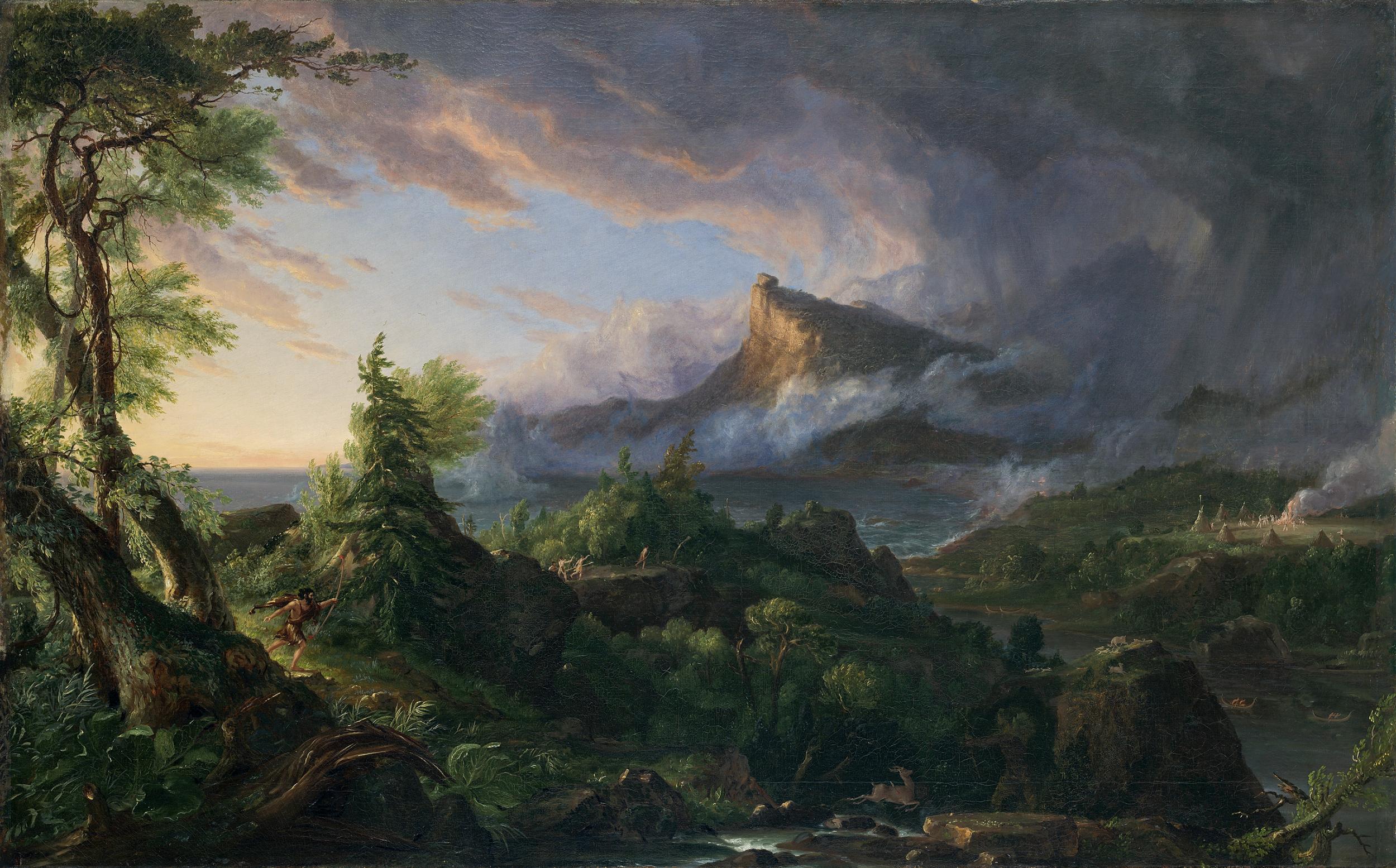Thomas Cole: Eden to Empire, National Gallery, review: We long to see more of this great American landscape painting in full flight
Too much familiar Constable and Turner, and not quite enough of Cole and his American successors

Your support helps us to tell the story
From reproductive rights to climate change to Big Tech, The Independent is on the ground when the story is developing. Whether it's investigating the financials of Elon Musk's pro-Trump PAC or producing our latest documentary, 'The A Word', which shines a light on the American women fighting for reproductive rights, we know how important it is to parse out the facts from the messaging.
At such a critical moment in US history, we need reporters on the ground. Your donation allows us to keep sending journalists to speak to both sides of the story.
The Independent is trusted by Americans across the entire political spectrum. And unlike many other quality news outlets, we choose not to lock Americans out of our reporting and analysis with paywalls. We believe quality journalism should be available to everyone, paid for by those who can afford it.
Your support makes all the difference.Now here’s a surprise. This exhibition of work by the landscape painter Thomas Cole, though described as a collaboration between two institutions, feels like a tariff-free American import. You notice that soon after the catalogue – heavy enough to kill a perfectly harmless house pet – is craned into your arms by the publicist. “THE MET” it reads at the bottom of the spine.
Does any of this matter? Oh yes.
Here’s the story, in brief. Cole (1805-1848) was in fact an Englander, from Bolton in Lancashire, whose family emigrated to the USA. He arrived in Philadelphia at the age of 18, determined to be a painter. Various trips back to Europe – first to the National Gallery, and then to Italy – saw him sucking up influences like a greedy sponge: Claude, Turner, Constable, for example. He was mightily impressed by the ruins of Tivoli.
You can see all this played out on the walls: the paintings which influenced him – the elemental turbulence of Turner, the cloudscapes of Constable – and how he responded. Back in the USA, he created a celebrated cycle of five paintings about the rise and fall of civilisation called The Course of Empire (1833-6).
It begins with hunter-gatherers innocently lolloping about the American wilderness, and ends with an epic scene of the destruction of a great classical city, which seems to be both a brilliant piece of faux-classicism of the kind that might have been painted in Europe during the eighteenth century, and, in its sweep and panache, to anticipate Cecil B de Mille.
Most of all Cole loved the American wilderness of the Catskill Mountains and New England, and he became known as the founder of the Hudson River School. Here is the American pastoral dream: sublime, Arcadian, immense. Cole was a witness to the incursion of the railroads into the Hudson Valley (You can see some diabolical puffs of smoke in the 1836/7 painting View on the Catskill – Early Autumn), and he hated the destruction of this virgin landscape with a passion worthy of John Ruskin.
His greatest work is The Oxbow (1836), which shows a view of the Connecticut River from the high vantage point of Mount Holyoke, with land, untamed and tilled, existing peaceably side by side, stretching away. Admire the pour and the boil of these clouds. You can read the political subtext here: just as Andrew Jackson was obliterating the wilderness of Cole’s day, so Trump’s equally evil expansionism is systematically destroying what remains.
So what’s wrong with this show? There is far too much of Constable and Turner – all this is far too familiar. (Not so familiar to American audiences, of course.) And there doesn’t feel to be quite enough of Cole and his successors here at sufficiently grand a scale. We long to see a bit more of this great American landscape painting in full flight. Our yearning to witness the heft, the size, the brilliant panache of American Sublimity feels a bit under catered for.
Upstairs in Room One, a small gallery which offers us free standing, self-sufficient shows of pocket size at no damage to the purse at all, are eight paintings by Ed Ruscha. This is a cycle of paintings of urban scenes in LA, all box-like factories labelled with identifying names across their flanks. Its title? Course of Empire, which is a slightly humorous nod in the direction of Cole’s visionary cycle.
Ruscha paints four locations and then, about ten years later, he returns and paints those same locations again. They are hung two by two, the earlier above the later, around the walls. Each one is cool and pernickety. This American Empire, distinctively blue of collar, tortoises along beneath the torpor of the California sun in its own very distinctive, non-European way. There are no people here, merely those crisp shapes raking away from us beneath the level burn of the sky.
Prophecy and turbulence have ceded space to the daily slow, small change of the American grind: the building which was described as Blue Collar Tires in 1992 is called Expansion of the Old Tires Building by 2005.
‘Thomas Cole: Eden to Empire’ is on 1 June – 17 October); ‘Ed Ruscha: Course of Empire’ is on 11 June – 7 October (nationalgallery.org.uk)
Join our commenting forum
Join thought-provoking conversations, follow other Independent readers and see their replies
Comments